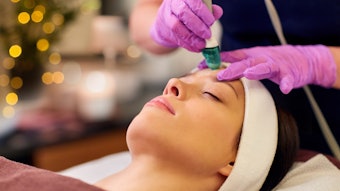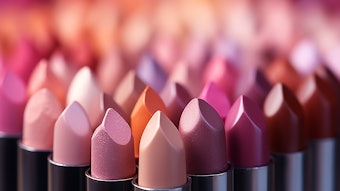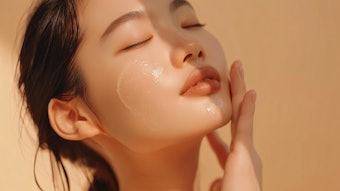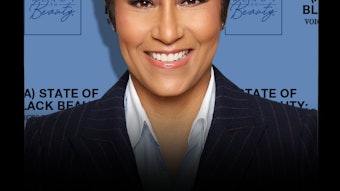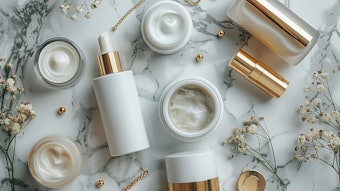The global market for the natural beauty category is projected to grow an astounding 10% through 2016, according to research firm Kline & Company, and with that increasing demand for safe, sustainable and ethically produced natural beauty products, the market continues to evolve. The natural beauty landscape is growing into a more mature and complex category, shifting away from a once-singular interpretation toward a broader range of values and expressions. This emergence of multi-expressive naturals is paving the way for new developments that will help shape the future of natural in beauty. Driven by diversified consumer segments, steady growth is evident as the variety of natural beauty products continues to expand.
The shift in consumer awareness is a significant factor affecting and driving the demand within the market. Today’s beauty consumers are beginning to educate themselves on everything from ingredient processing to package recycling claims in order to determine the credibility and authenticity of offerings. There are even several prominent resources—such as the Environmental Working Group’s Skin Deep online cosmetics database—consumers are using to become more educated, sophisticated and involved in their purchase decisions as the variety of natural beauty products continues to expand and information becomes increasingly accessible. This shift in awareness is following the emerging trends that are influencing the evolution of multi-expressive naturals in beauty.
Transparency and Authenticity
As consumers become more savvy, they are demanding more transparency from natural beauty brands and products. Unilever-owned natural skin care brand Simple ties active ingredients (even if they are not “natural-sounding,” e.g., allantoin) to specific functions to clearly communicate product benefits. This is an example of how, in order to maintain credibility with consumers, brands are finding unique ways to be straightforward about the ingredients they use and the values they hold—even their less-than-perfect aspects.
Known for its fresh, handmade and eco-friendly cosmetics and bath products, skin and body care brand Lush details its use of natural and synthetic ingredients, like preservatives, in its online Lushopedia resource, where the brand’s irreverent-yet-transparent tone of voice is on full display. For example, under the entry for propylparaben, it states, “Parabens are some of the oldest cosmetic preservatives and have been used since the 1920s.” Lush also claims to “assess the need for preservatives by considering many factors … and parabens are still the safest and mildest [Lush] can find.” Also, on the back of every Lush product is a face showing the person who made it, displaying transparency and the opportunity for a consumer to truly feel more connected to the source and origins of the product.
Consumer distrust with brands that appear vague about what their products contain also has created a new DIY culture where consumers concoct beauty potions on their own, often made from familiar ingredients and no preservatives. And there are brands capitalizing on this subculture. Naturalis, from home appliances manufacturer Rowenta, is a kit including an electric canister, storage containers, measuring tools and a recipe book that allows users to formulate their own cosmetics at home.
Techno-Nature, Purity and Potency
In addition to pure, natural ingredients, savvy consumers are also looking to natural-meets-science formulas as a way to attain a new level of efficacy. Intelligent Nutrients, a U.S.-certified organic health and beauty brand created by Aveda founder Horst Rechelbacher, uses plant stem cell science in its targeted anti-aging treatments, a process it touts as “nutritional chemistry.” The organic skin care brand Sophyto offers formulations rooted in phytotherapy, which uses botanicals and other bioactive ingredients to nourish and restore skin.
Additionally, there is greater emphasis being placed on methods for extracting natural molecules or compounds from a natural source versus emphasizing ingredients alone. Driven by the belief in nature’s inherent goodness locked within flora, formulators are focusing their attention on harnessing that essence to unlock the most powerful and pure extracts. Luxury natural skin care brand Sponge uses ingredients extracted by boiling plants, herbs and flowers to particular temperatures to attain their high amounts of nutrients and vitamins. This type of controlling the process from raw material to finished product helps guarantee the traceability that is becoming increasingly appealing to today’s natural beauty consumers.
Good Enough to Eat
Another important development is the overlap of nutrition and beauty. The “If it’s good enough to eat, it’s good enough for my skin” mentality is creating opportunities for food-inspired products and positionings that are redefining what it means to be natural. As consumers increasingly fear that products applied to skin are absorbed by the body in a similar way to how food is ingested, edible offerings made with pure, fresh ingredients are emerging.
EdenSong Essentials, a natural skin care brand, promises to deliver food-grade, edible skin care and body care products using 100% raw, organic and chemical-free ingredients. And anti-aging skin care brand IO Beauty offers a potent antioxidant serum that can be both applied topically and ingested. The “beauty booster” can be drizzled over a favorite yogurt or mixed into any drink for added flavor, introducing a new benefit territory to the category. Also, brands claiming to be “gluten-free” or “vegan” have found an increasingly prevalent way that beauty mimics and is inspired by food.
Transformational and Spiritual Benefits
Going beyond functionality into higher power or spiritual benefit spaces is another emerging trend that will continue to drive new platforms for beauty growth. Brands are beginning to address the need and desire for self-actualization and holistic, transformative experiences. This also feeds the push toward multi-expressive product development, aiming to help consumers achieve their deepest desires: harmony with nature, elevated consciousness, heightened sense of self, and an ability to live life present and fully engaged in the moment.
India Hair-Yurvedics, a hair care line from I.C.O.N., captures the essence of health and beauty by incorporating ancient practices and the restorative oils of moringa and argan to provide healing, strength, luster, well-being and tranquility. The products are also infused with the fragrance of amber to invoke past, present and future peace. Kings & Queens, from Korres, is another brand that blends the ancient and modern to set itself apart in the naturals landscape. The brand stretches beyond positioning solely on natural ingredients and plant-based botanicals by evoking a sense of time, place, myth and legend, delivering an overall sensual and indulgent experience with ingredients such as malachite and lotus.
In shaping the future of natural in beauty, brand owners will continue pushing into new territories to appeal to evolving consumer demands and to differentiate brands and products in the marketplace. With the increasing awareness and access to diverse natural beauty products, consumers will remain influential in driving the growth of this category of beauty. The shift toward multi-expressive naturals suggests there are more opportunities to come, and as it evolves, the landscape will extend beyond beauty products and services into more diverse and dimensional experiences.
Liz Grubow is vice president and group creative director of LPK Beauty. In her 20-plus-year career, Grubow has helped develop and manage brand identity programs for some of the world’s most successful beauty brands—including Pantene, Olay, MAX Factor International and Cover Girl.
Valerie Jacobs is a group director for LPK Trends and a design forecaster focusing on the development of trend analysis for LPK client brands. Jacobs is also a professor at the University of Cincinnati College of Design, Architecture, Art and Planning, and is a guest lecturer for the In-Store Marketing Institute, Design Management Institute and the Industrial Designers Society of America.

